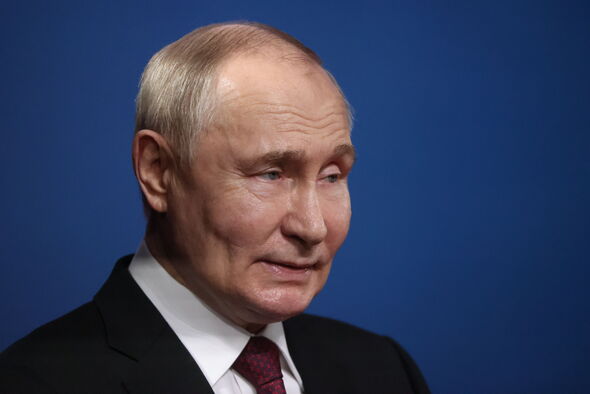Russia is taunting the West by unilaterally attempting to change its maritime borders with two Nato states in a blatant ‘sea grab’ in the Baltic.
The inflammatory move comes as Vladimir Putin also launched major tactical – or battlefield – nuclear weapon drills close to Ukraine amid a menacing threat to use the weapons if Alliance troops are deployed on its neighbour’s soil.
Footage released online showed the exercises underway with Iskander and hypersonic Kinzhal – or Dagger – missiles, testing “the readiness of combat units to respond and to unconditionally ensure the territorial integrity and sovereignty of the Russian state”.
Meanwhile, the shock bid to change Russian maritime borders with Finland and Lithuania came from Putin’s defence ministry.
It revealed it now intends to appropriate inland sea waters in the eastern part of the Gulf of Finland and near the cities of Baltiysk and Zelenodradsk in high-militarised Kaliningrad region.
Russia intends to redraw its territorial waters around the islands of Sommers, Jahi, Rodsher, Malyi Tyuters, Vigrund, and Gogland, and the north cape of the Narva River near the state border with Finland.
Putin also plans to unilaterally redraw the sea map near the Curonian Spit, divided between Lithuania and Russia, and Vistula Spit, which is split between Poland and Russia, as well as around the Taran Cape.
The scale of the ‘sea grab’ is as yet unclear, but could lead to a host of disputed waters between Russia and Nato with the potential of naval flare-ups.
The Russian defence ministry claimed the current maritime map was based on geographic coordinates established by a decree of the USSR Ministers Council in 1985 which “do not fully correspond to the current geographic situation” before the break up of the Soviet Union.
They “do not allow to determine the external border of the internal sea waters” of Russia in current conditions, it said.
As a result, Moscow will instead “declare invalid” a decades-old resolution of the Soviet Cabinet regulating borders in the Baltic Sea region.
There was no immediate reaction from Finland and Lithuania, nor from Nato.
But the move comes amid speculation that in the event of a deepening crisis with Russia, Nato could attempt to seal off Russian operations in the Baltic in the Gulf of Finland and around the exclave of Kaliningrad, which is wedged between Alliance states Lithuania and Poland.
As tensions mount, the tactical nuclear drills are being seen as Russia’s response to comments by Lord Cameron that the UK would not object to British missiles being used by Kyiv forces to hit targets inside Putin’s territory, and President Emmanuel Macron’s threat to send Nato troops to Ukraine, according to Moscow sources.
Hardline Russian MP Lt-Gen Andrey Gurulev warned: “If the [West] are underestimating [Russian resolve], then there will probably come a moment….when this nuclear strike will smash someone over the head quite seriously….
“We are talking about….the integrity and independence of the state.
“The Nazism that has developed in Ukraine with the help of the West is a threat to us.
“If the West is going to develop this Nazism further by helping Ukraine, then I think it is a direct threat to our independence and integrity on our side.”
Putin recently said that his nuclear weapons were “always at combat readiness”.
Tactical weapons include air bombs, warheads for short-range missiles and artillery munitions and are meant for use on a battlefield.
They are less powerful than the strategic weapons — massive warheads that arm intercontinental ballistic missiles and are intended to obliterate entire cities.
Yesterday, the Ukrainian navy confirmed that it hit the Karakurt class small missile ship Cyclone, Putin’s newest Black Sea Fleet vessel which went into service in 2023, in a strike last week.
The vessel was being used in Sevastopol Bay to defend against Ukrainian missile and drone attacks.
The strike is seen as another blow to Putin who has lost almost half his Black Sea naval capacity during the two-year war.
